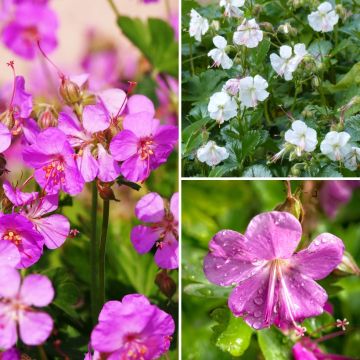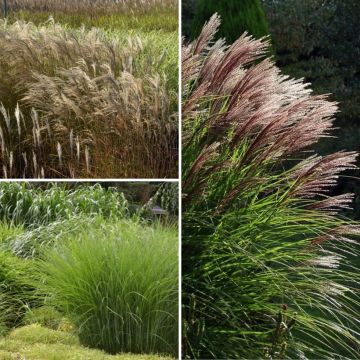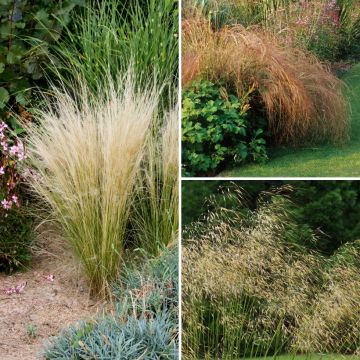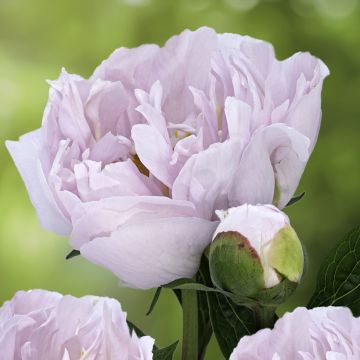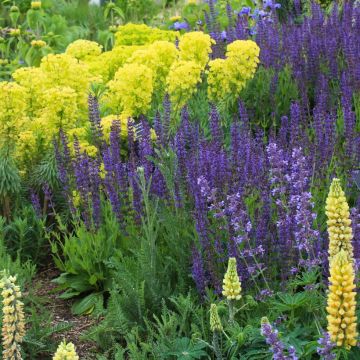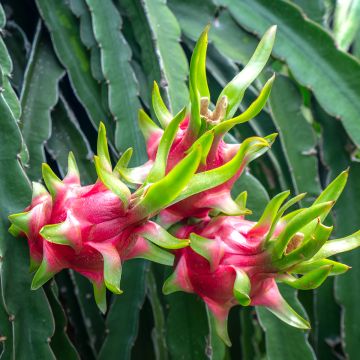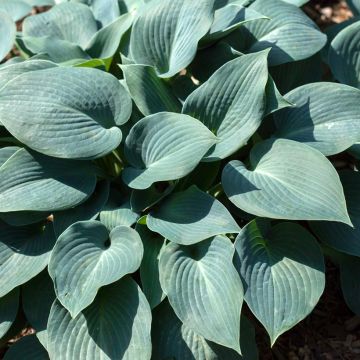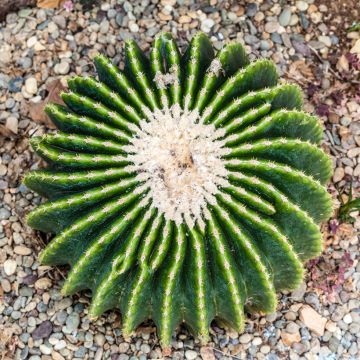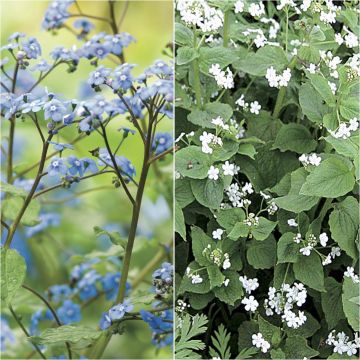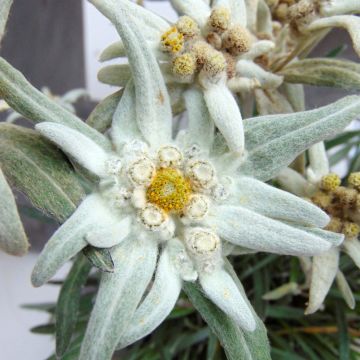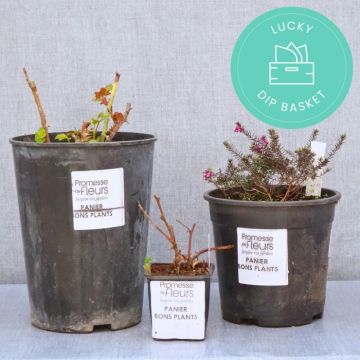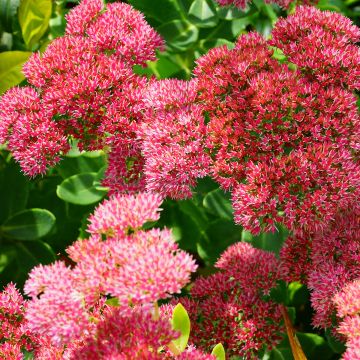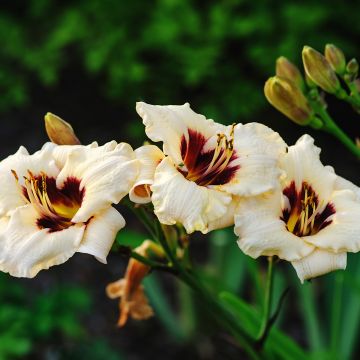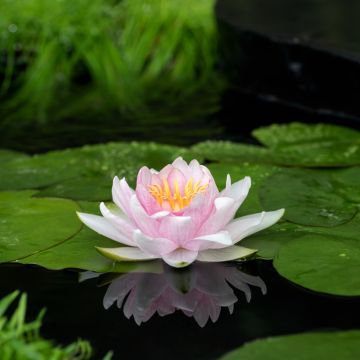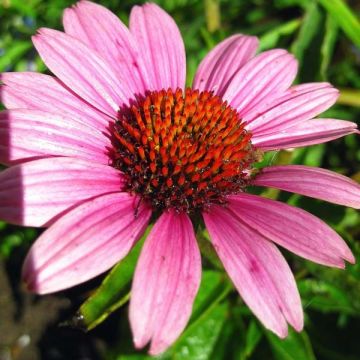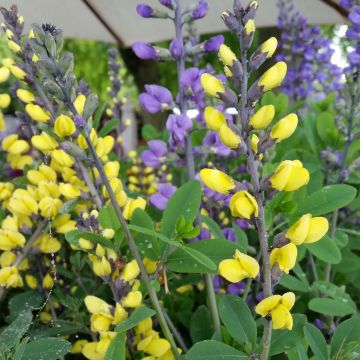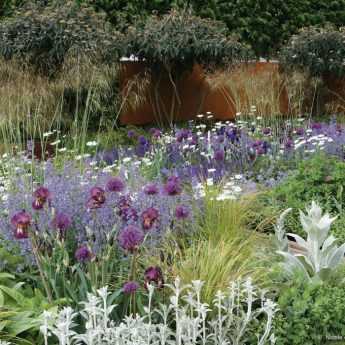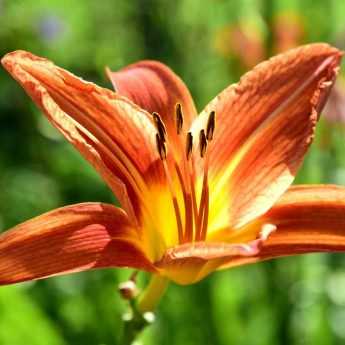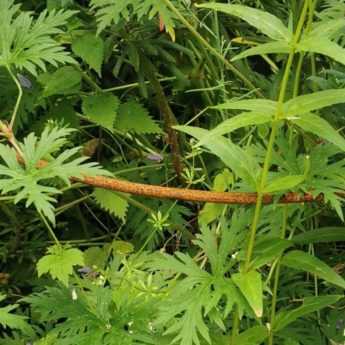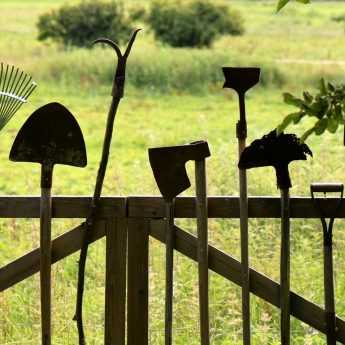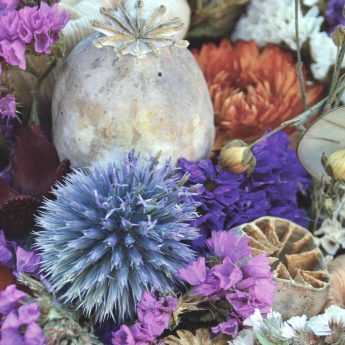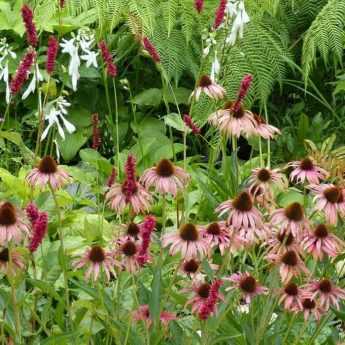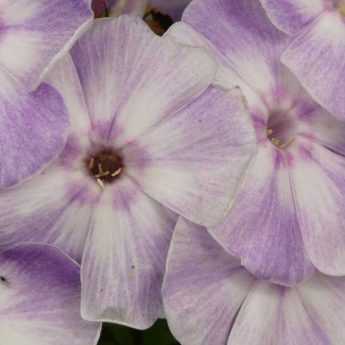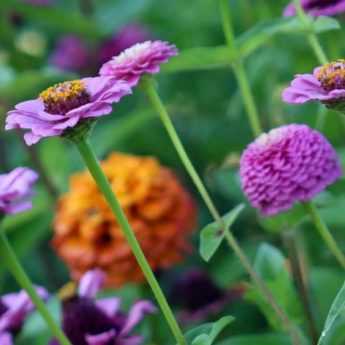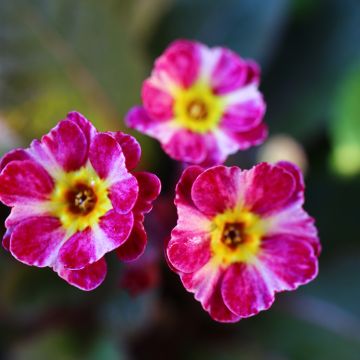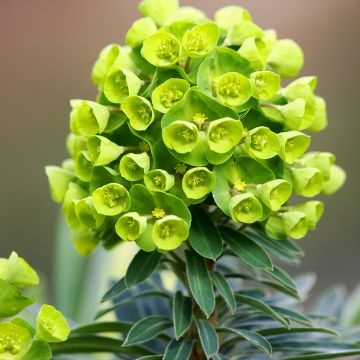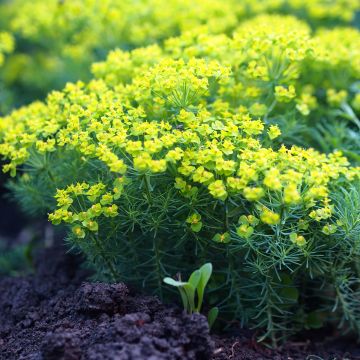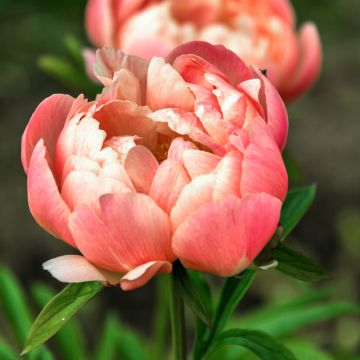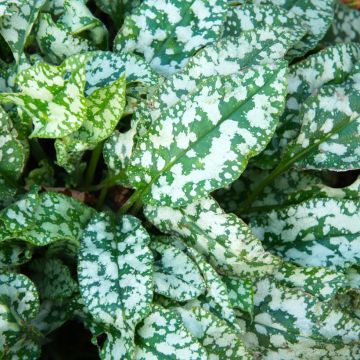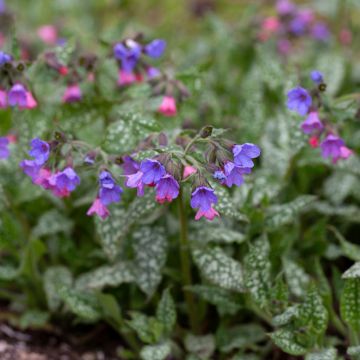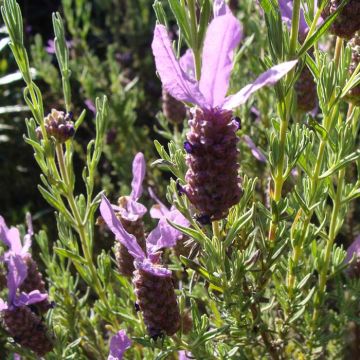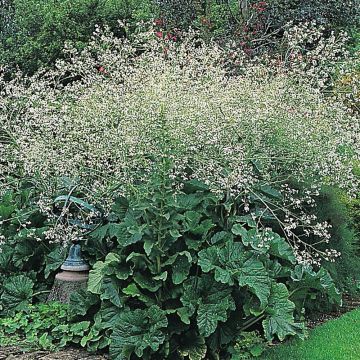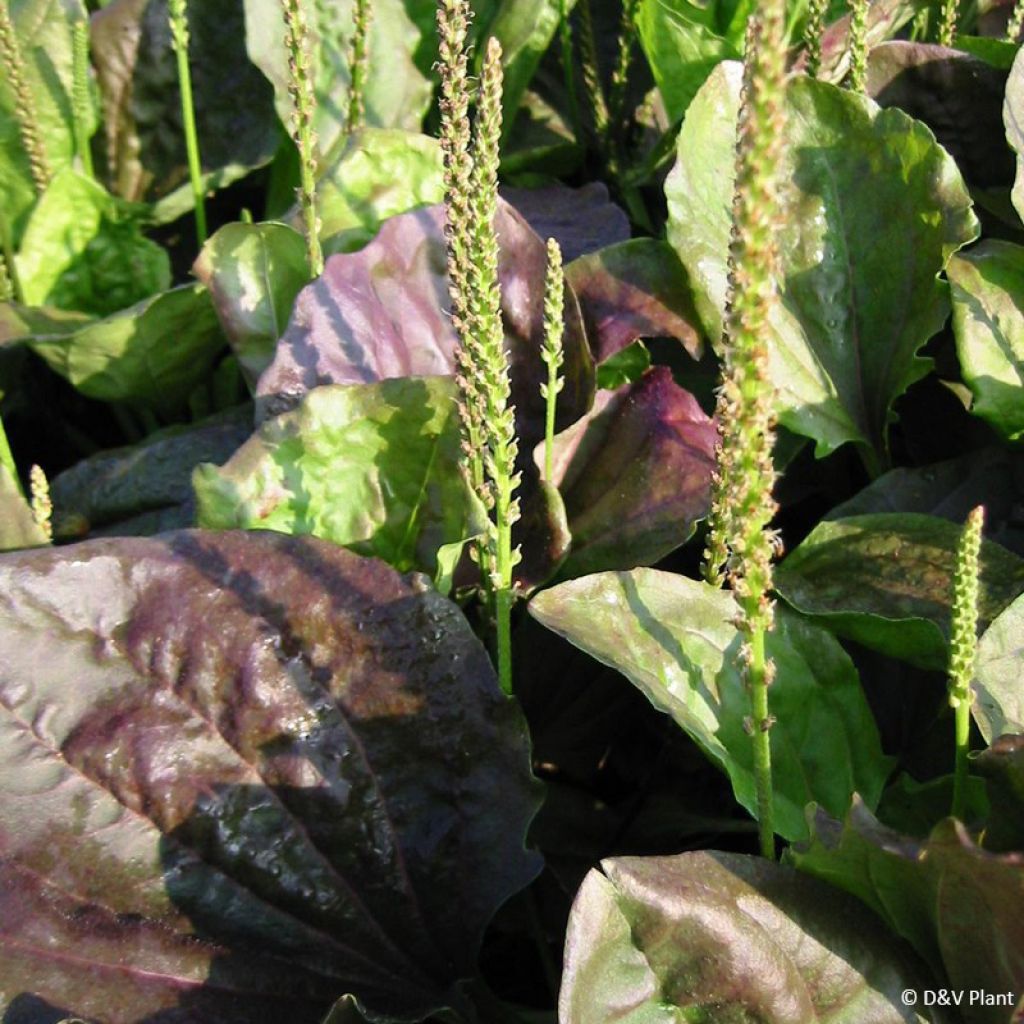

Plantago major Atropurpurea - Grand plantain pourpre
Plantago major Atropurpurea
Plantago major Atropurpurea
Greater Plantain, Purple-leaved Plantain, Broadleaf Plantain, White Man's Foot, Common Plantain
Why not try an alternative variety in stock?
View all →This plant carries a 12 months recovery warranty
More information
We guarantee the quality of our plants for a full growing cycle, and will replace at our expense any plant that fails to recover under normal climatic and planting conditions.
Does this plant fit my garden?
Set up your Plantfit profile →
Description
Greater Plantain or Plantago major Atropurpurea is a rare purple form of a perennial "weed", also called Broadleaf Plantain and White Man's Foot, that can be found in our clay meadows where it accompanies dandelions. It can be welcomed in the vegetable garden, where its leaves can be consumed or used for medicinal purposes. This beautiful purple plantain also has its place in a wild garden. It forms an attractive rosette of wide leaves, tinted with dark purple on a green background. Its flowering is not spectacular, with thin and greyish-yellow flower spikes, but it produces seeds that are a delight for domestic birds. It is a plant that enjoys the sun, in non-compacted clay soils.
Greater Plantain is a perennial herbaceous plant native to Europe and now widespread in all temperate regions of the world. It is commonly found along roadsides, in uncultivated areas, in poor soils that are not suitable for traditional crops. Plantain is the flagship of the botanical family Plantaginaceae.
Growing naturally in highly clayey, non-compacted, even suffocating soils, where it faces little competition, this perennial displays a spreading rosette habit, composed of deeply veined wide leaves. Their lamina is thick, elastic, fibrous and rich in mucilage. This plantain blooms from May to November, in the form of erect flower stems carrying a cylindrical or oblong, sparse spike at their tip, where tiny greyish-yellow flowers are tightly packed.
In the garden, this herb is grown for its very tender young leaves which are consumed raw in mixed salads or cooked like spinach. It can also be used to treat minor injuries such as insect bites, as it has emollient and astringent properties.
Harvesting: leaves should be harvested between May and June.
Storage: leaves should be consumed immediately after harvesting.
Gardener's tip: like lamb's lettuce, Greater Plantain should be sown in non-compacted soil. If, in its natural state, the rosette of this plantain spreads widely at ground level, it can have a slightly more upright habit when cultivated. Greater Plantain is common in meadows where it withstands trampling and overgrazing well.
Report an error about the product description
Flowering
Foliage
Plant habit
Botanical data
Plantago
major
Atropurpurea
Plantaginaceae
Greater Plantain, Purple-leaved Plantain, Broadleaf Plantain, White Man's Foot, Common Plantain
Western Europe
Other Perennials A to Z
View all →Planting and care
Planting Greater Plantain should be done in a sunny location, in spring or autumn, in any well-prepared soil. This plant is tolerant in terms of soil: it can withstand very clayey and compact soils, and is not very demanding in terms of watering. Its flower stalks can be cut before flowering to prevent seed production if you wish to avoid spontaneous sowing. Keep some seeds if you want to propagate the plant or let it self-seed in the garden.
Planting period
Intended location
Care
Planting & care advice
This item has not been reviewed yet - be the first to leave a review about it.
Similar products
Haven't found what you were looking for?
Hardiness is the lowest winter temperature a plant can endure without suffering serious damage or even dying. However, hardiness is affected by location (a sheltered area, such as a patio), protection (winter cover) and soil type (hardiness is improved by well-drained soil).

Photo Sharing Terms & Conditions
In order to encourage gardeners to interact and share their experiences, Promesse de fleurs offers various media enabling content to be uploaded onto its Site - in particular via the ‘Photo sharing’ module.
The User agrees to refrain from:
- Posting any content that is illegal, prejudicial, insulting, racist, inciteful to hatred, revisionist, contrary to public decency, that infringes on privacy or on the privacy rights of third parties, in particular the publicity rights of persons and goods, intellectual property rights, or the right to privacy.
- Submitting content on behalf of a third party;
- Impersonate the identity of a third party and/or publish any personal information about a third party;
In general, the User undertakes to refrain from any unethical behaviour.
All Content (in particular text, comments, files, images, photos, videos, creative works, etc.), which may be subject to property or intellectual property rights, image or other private rights, shall remain the property of the User, subject to the limited rights granted by the terms of the licence granted by Promesse de fleurs as stated below. Users are at liberty to publish or not to publish such Content on the Site, notably via the ‘Photo Sharing’ facility, and accept that this Content shall be made public and freely accessible, notably on the Internet.
Users further acknowledge, undertake to have ,and guarantee that they hold all necessary rights and permissions to publish such material on the Site, in particular with regard to the legislation in force pertaining to any privacy, property, intellectual property, image, or contractual rights, or rights of any other nature. By publishing such Content on the Site, Users acknowledge accepting full liability as publishers of the Content within the meaning of the law, and grant Promesse de fleurs, free of charge, an inclusive, worldwide licence for the said Content for the entire duration of its publication, including all reproduction, representation, up/downloading, displaying, performing, transmission, and storage rights.
Users also grant permission for their name to be linked to the Content and accept that this link may not always be made available.
By engaging in posting material, Users consent to their Content becoming automatically accessible on the Internet, in particular on other sites and/or blogs and/or web pages of the Promesse de fleurs site, including in particular social pages and the Promesse de fleurs catalogue.
Users may secure the removal of entrusted content free of charge by issuing a simple request via our contact form.
The flowering period indicated on our website applies to countries and regions located in USDA zone 8 (France, the United Kingdom, Ireland, the Netherlands, etc.)
It will vary according to where you live:
- In zones 9 to 10 (Italy, Spain, Greece, etc.), flowering will occur about 2 to 4 weeks earlier.
- In zones 6 to 7 (Germany, Poland, Slovenia, and lower mountainous regions), flowering will be delayed by 2 to 3 weeks.
- In zone 5 (Central Europe, Scandinavia), blooming will be delayed by 3 to 5 weeks.
In temperate climates, pruning of spring-flowering shrubs (forsythia, spireas, etc.) should be done just after flowering.
Pruning of summer-flowering shrubs (Indian Lilac, Perovskia, etc.) can be done in winter or spring.
In cold regions as well as with frost-sensitive plants, avoid pruning too early when severe frosts may still occur.
The planting period indicated on our website applies to countries and regions located in USDA zone 8 (France, United Kingdom, Ireland, Netherlands).
It will vary according to where you live:
- In Mediterranean zones (Marseille, Madrid, Milan, etc.), autumn and winter are the best planting periods.
- In continental zones (Strasbourg, Munich, Vienna, etc.), delay planting by 2 to 3 weeks in spring and bring it forward by 2 to 4 weeks in autumn.
- In mountainous regions (the Alps, Pyrenees, Carpathians, etc.), it is best to plant in late spring (May-June) or late summer (August-September).
The harvesting period indicated on our website applies to countries and regions in USDA zone 8 (France, England, Ireland, the Netherlands).
In colder areas (Scandinavia, Poland, Austria...) fruit and vegetable harvests are likely to be delayed by 3-4 weeks.
In warmer areas (Italy, Spain, Greece, etc.), harvesting will probably take place earlier, depending on weather conditions.
The sowing periods indicated on our website apply to countries and regions within USDA Zone 8 (France, UK, Ireland, Netherlands).
In colder areas (Scandinavia, Poland, Austria...), delay any outdoor sowing by 3-4 weeks, or sow under glass.
In warmer climes (Italy, Spain, Greece, etc.), bring outdoor sowing forward by a few weeks.


































